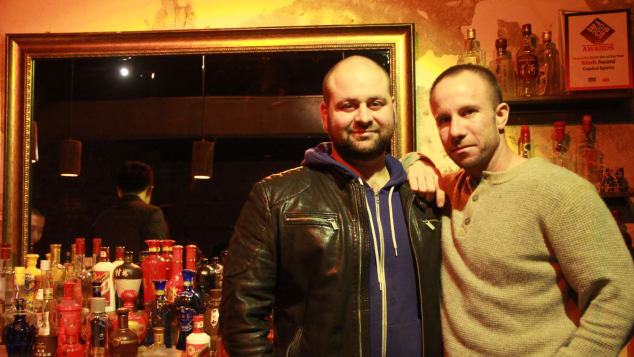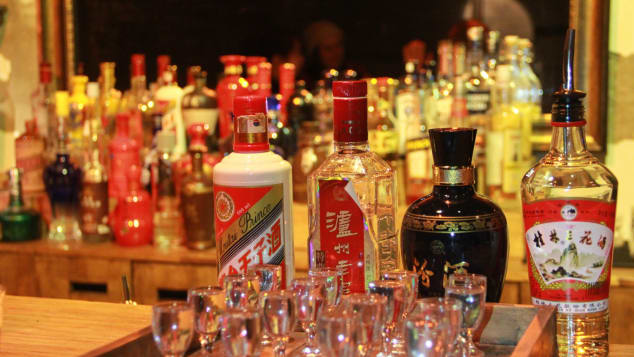How to Drink Baijiu: Beijing's Pros Share Their Tips


It's the most widely drunk hard liquor in the world but it's rarely found on cocktail menus.
Baijiu, distilled from sorghum and rice, rules every festive occasion in China, where it's the tipple of choice for everything from wedding receptions to business banquets.
It's especially popular during celebrations for the Lunar New Year, which began Saturday, when shot glasses filled with the potent spirit are thrown back and slammed down on the table in endless rounds of toasts.
"Many (foreigners) find baijiu off-putting, but it's not about the liquor itself," says Bill Isler, co-founder of Beijing's Capital Spirits, the world's first baijiu-themed bar.
Isler says the drink's fearsome reputation comes from visitors being coerced into excessive drinking by Chinese friends or co-workers -- persuading people to drink is a gesture of generosity and "being a good host," he says.
But Isler wants to change the way baijiu is regarded and consumed. His bar serves different types of the fiery spirit as well as baijiu cocktails.
It's a push shared by distillers -- sales of high-end baijiu brands like Moutai have slowed as President Xi Jinping has reined in officials' expense accounts as part of an anti-corruption drive.
"It is definitely getting more exposure," says Isler.
Thanks to China's huge population, baijiu accounts for a third of global spirit sales. Euromonitor International, a London-based consultancy, estimated about 5.5 billion liters, or 1.5 billion gallons of baijiu sold last year.
Baijiu 101
Isler's advice for baijiu newbies is this: "Don't drink with Chinese people."
He suggests people approach the drink "on their own first" instead of being thrown into a Chinese banquet and forced to ganbei -- bottom up -- round after round.
"By the time they drink with Chinese they should know what baijiu styles they prefer and how much they can drink," he says.
Capital Spirits, for example, offers baijiu flights -- four 10 milliliter mini shots of the basic baijiu styles, going from the mildest to strongest.
Baijius are categorized by these four aroma profiles.
Rice aroma:Originating in southern Guangxi province, this is probably the lightest among the four types. Unlike other baijiu styles, it's made from rice, which gives it a sweet, floral tone. A fine example of this type of baijiu is Guilin Sanhua, made using water sourced from the picturesque local Li River.
Light aroma:This style dominates the north, especially around Beijing. Fermented solely from sorghum, the light aroma isn't matched by ABVs as high as 56%. The brand Erguotou, with its iconic square-shaped bottled, falls into this category. In terms of the taste, light aroma baijius are usually delicate and dry.
Strong aroma: China's most popular baijiu is produced with at least two different grains and fermented in mud pits, giving it a more complex and almost overripe flavor. A fine example is Luzhou Laojiao, a distillery that brews the spirit of the same name and is one of the oldest still in production (from 1573).
Sauce aroma:Some say this almost savory drink's flavor resembles soy sauce. The most popular brand, Moutai, produced using labor-intensive methods in Guizhou province, is the most expensive type of baijiu. A batch of Moutai has to go through rounds of subterranean fermentation so it usually takes a year to produce.
